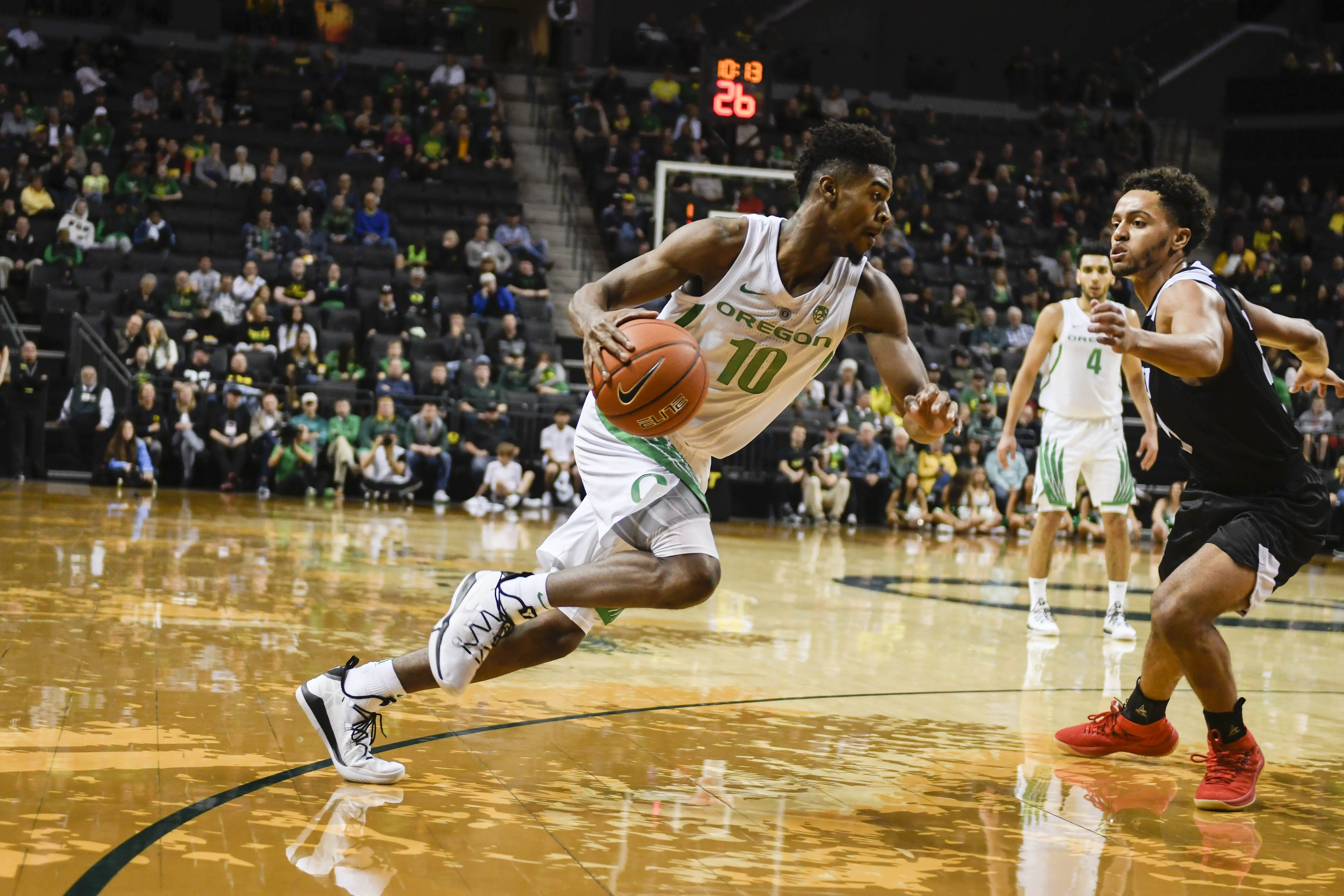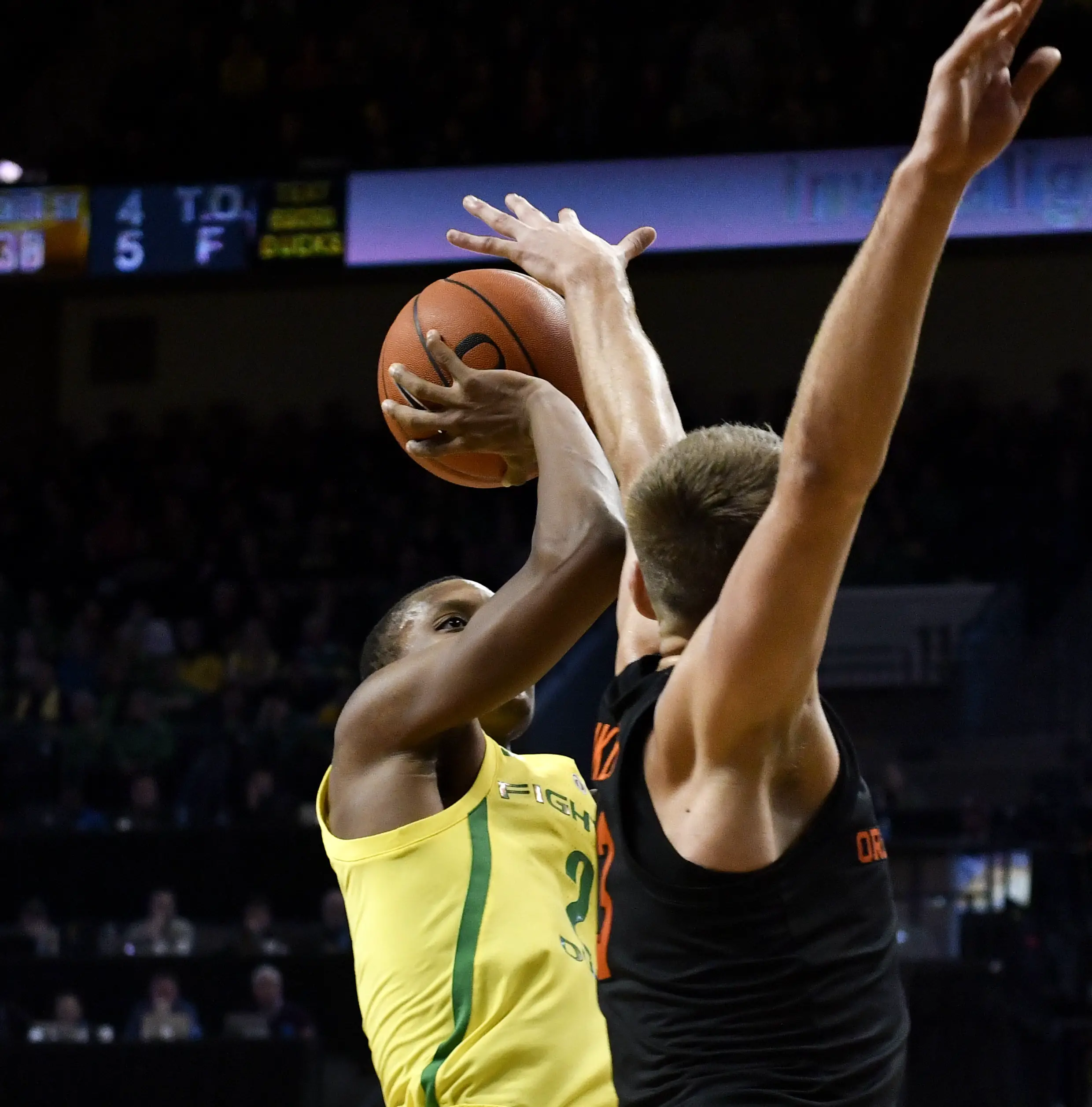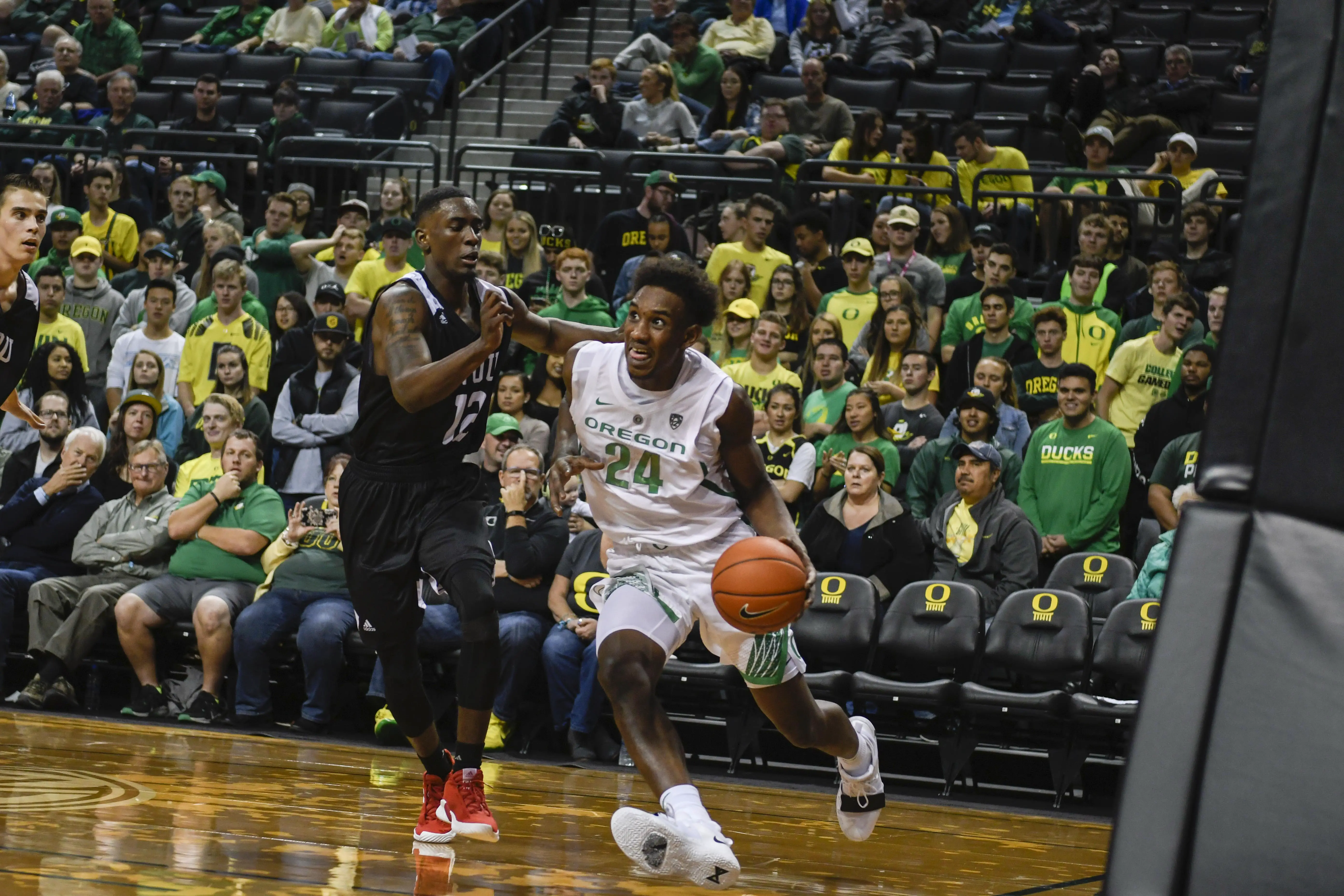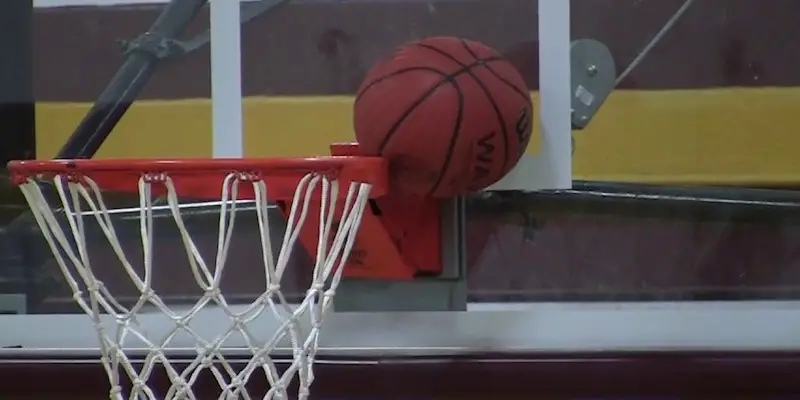Oregon is a bad shooting basketball team for a reason: they’re young. Troy Brown was a good college basketball player, but he isn’t a very good shooter. When Dillon Brooks, Malik Hairston, VJ Bailey and virtually every other highly touted recruit arrived in Eugene, they weren’t very good shooters. Here’s why.

Bailey needs to become a consistent scorer for Oregon to compete in conference play.
Simply put, most of them have never had to shoot 500 shots a day in a gym to be a great player, and now they do. If you watch enough high school and AAU games, you see the best players running out and dunking, or slashing to the basket in the half court rather than shooting jump shots. Players also aren’t as skilled at coming off screens or playing the pick and roll to create a jump shot either. This has been this way for decades though, it’s not a new thing.
Scoring is easier at the rim, winning is easier when you shoot a high percentage, and their athleticism lets them dominate the game in that way. At the college level, though, all those drives to the rim are taken away.
Even Oregon recruit Cassius Stanley, as great a player as he is, still doesn’t have a great jump shot. It’s good, but he’s not forced to make it better because defenses aren’t strong enough to force him to shoot the jumpers. For what it’s worth, I saw Stanley shoot about 100 extra shots before each game last week. He’s a worker.

Louis King will start to find his jump shot as he adjusts to tougher defenses.
Louis King, as you’re seeing now, is no different. He’s a terrific player who teams are now focusing on because he is Oregon’s most diverse offensive threat. For now he isn’t hitting the jump shot, but that should come.
Team defenses are designed to stop dribble penetration. College defenses bring equal athleticism that allows defenders to get back and stop fast breaks. The result is that you often see highly touted players struggle offensively during their freshman year.
Shooting is one of the skills that make Bol Bol such a special player. He arrived with NBA form on his jump shot and the results showed. There are probably only ten freshmen each year who shoot it that well. Oregon’s going to miss his physicality, his presence at the rim and his scoring. His loss completely changes the trajectory of this year’s team, but not the program itself.
The Future

Kigab’s transfer leaves Oregon with very little experience on its bench.
I remain bullish on Oregon’s program. It’s hard to see now, but the future is bright for Coach Altman. Assuming both Kenny Wooten and King return, Oregon will have a wealth of talent, and for the first time in three years, six Ducks will have played together for at least a full season.
To me, the one and done isn’t Oregon’s biggest problem. Instead, its the constant transferring by four-star players looking for more playing time. The departure of players like Keith Smith, MJ Cage, AJ Lapray, Abu Kigab and others leaves Oregon without experienced players to bring off the bench. Nobody can fault them for wanting to play right away though. Kigab isn’t likely to go to the NBA, but if he improves his shot he could have a nice career overseas. Playing time for the next two years is what he might need to get there.
Water Cooler Notes
Oregon’s loss to OSU puts a big hurt on its chances to make the NCAA tournament. There is a long way to go but they must beat WSU, Cal, Stanford, UCLA (and OSU away) to have a chance.
Defense and rebounding are the key to winning from here on out. Wooten is going to be a big part of that when he returns to the lineup in February. Oregon’s young big men are still getting killed on the glass. That has to stop.
Bob Rickert
Lake Oswego, Oregon
Top Photo Credit: Eugene Johnson
 Bob Rodes, the FishDuck.com Volunteer editor for this article, is an IT analyst, software developer and amateur classical pianist in Manchester Tennessee.
Bob Rodes, the FishDuck.com Volunteer editor for this article, is an IT analyst, software developer and amateur classical pianist in Manchester Tennessee.
Related Articles:
Will The Coaching Carousel Kill Oregon's CFP Chances?
The Playoff Formula Hasn't Changed
Oregon Aims to Bury Dawgs, Punch Playoff Ticket in Rivalry Clash
Huskies Are the New Beavers, Stay In Your Lane Kiffin, and the Civil Apple Cup War
Oregon Football: The X-Factor Vs. Washington
Oregon vs. USC was the Game this Season Needed
A native Oregonian, Bob’s spent 16 years covering Duck football and basketball for AOL Fanhouse, OregonLive and Rivals.com. He’s also hosted a sports talk show on ESPN Radio and led marketing for the Oregon Sports Hall of Fame.

